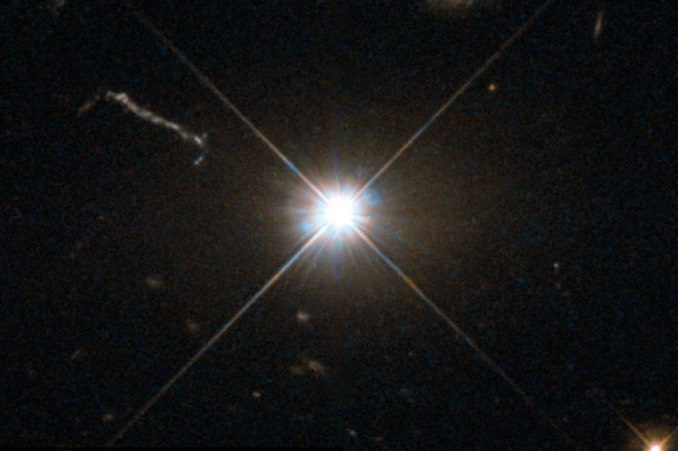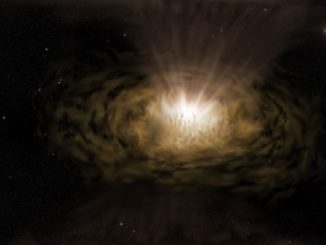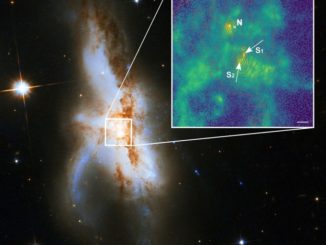
Australian astronomers have found what might be the fastest-growing black hole in the known Universe, an ancient 20-billion-solar mass beast sucking in the mass of the Sun every two days and emitting a mind-boggling torrent of radiation.
“This black hole is growing so rapidly that it’s shining thousands of times more brightly than an entire galaxy, due to all of the gases it sucks in daily that cause lots of friction and heat,” said Christian Wolf of the Australian National University’s Research School of Astronomy and Astrophysics.
“If we had this monster sitting at the centre of our Milky Way galaxy, it would appear 10 times brighter than a full Moon. It would appear as an incredibly bright pin-point star that would almost wash out all of the stars in the sky.”
The black hole, or quasar, somehow formed in the early ages of the universe and had grown to its 20-billion-solar-mass size by the time astronomers found it at a distance of some 12 billion light years. The supermassive black hole radiates ultraviolet and X-ray energy as gas and dust are sucked in and heated to enormous temperatures, enough to wreak havoc in its host galaxy.
“Again, if this monster was at the centre of the Milky Way it would likely make life on Earth impossible with the huge amounts of x-rays emanating from it,” Wolf said.
The black hole was detected by the SkyMapper telescope at the ANU Siding Spring Observatory in near infrared light, the result of red shifting due to the expansion of space during the light’s long passage to Earth.
“These large and rapidly-growing black holes are exceedingly rare, and we have been searching for them with SkyMapper for several months now,” Wolf said. “The European Space Agency’s Gaia satellite, which measures tiny motions of celestial objects, helped us find this supermassive black hole.”
The Gaia satellite confirmed the object found by the SkyMapper telescope was relatively motionless and thus at a great distance, making it a large quasar candidate. The identification was confirmed by spectral analysis using the ANU 2.3 metre telescope.
Wolf said it’s not yet known how a black hole could grow to such an enormous size so early in the universe, but “the hunt is on to find even faster-growing black holes.”
“While objects of this luminosity are exceedingly rare in the universe, they are particularly valuable as bright background and reference sources in order to study the properties of intervening matter along the line-of-sight, and for directly probing the expansion of our universe with new instruments in the coming decades,” Wolf writes in a paper describing the detection.



